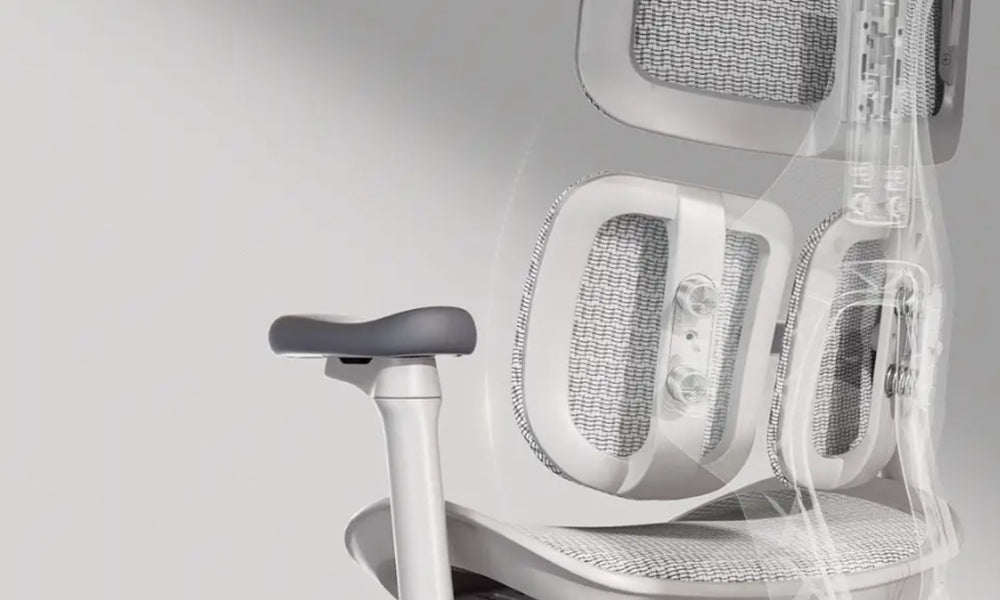Many of us spend long hours sitting at a desk, which can lead to discomfort, poor posture, and a sedentary lifestyle. However, incorporating physical activity into your workday can make a significant difference in your health and well-being. Ergonomic office chairs are designed to support your posture, making it easier to perform exercises right at your desk. Here are five effective exercises you can do while sitting in an ergonomic chairs to boost your energy, improve your posture, and enhance your overall health.
1. Seated Leg Raises
Why it’s beneficial: This simple exercise strengthens your legs and improves circulation, helping to prevent stiffness and discomfort.
How to do it:
Sit up straight in your chair, keeping your feet flat on the floor.
Slowly extend your right leg out in front of you until it is parallel to the ground. Hold for a few seconds.
Lower your leg back to the floor.
Repeat this 10-15 times, then switch to your left leg.
Tips: For added difficulty, try holding your leg up for a longer duration or adding ankle weights if you have them.
2. Seated Torso Twist
Why it’s beneficial: This exercise enhances spinal flexibility and can relieve tension in your back and shoulders.
How to do it:
Sit up straight with your feet flat on the ground and your hands on your thighs.
Slowly twist your torso to the right, using your left hand to hold onto the back of your chair for support.
Hold the stretch for 15-30 seconds, breathing deeply.
Return to the center and repeat on the left side.
Tips: Make sure to move slowly to avoid straining your back. Keep your hips facing forward throughout the twist to maintain good posture.
3. Seated Shoulder Shrugs
Why it’s beneficial: Shoulder shrugs relieve tension in the neck and upper back, which can build up from prolonged sitting.
How to do it:
Sit up straight with your arms at your sides.
Inhale deeply and lift your shoulders up towards your ears as high as you can.
Hold for a moment, then exhale as you lower your shoulders back down.
Repeat this movement 10-15 times.
Tips: You can also add neck stretches by tilting your head side to side or forward while performing shoulder shrugs for an even greater release of tension.
4. Seated Calf Raises
Why it’s beneficial: This exercise improves circulation in your legs and can help prevent blood clots during long periods of sitting.
How to do it:
Sit up straight with your feet flat on the ground.
While keeping your heels on the floor, raise your toes up as high as you can, engaging your calf muscles.
Hold the position for a moment, then lower your toes back down.
Repeat for 15-20 repetitions.
Tips: To increase the intensity, you can perform this exercise with one leg at a time or try holding the position at the top for a few seconds.
5. Wrist and Finger Stretches
Why it’s beneficial: With frequent typing and mouse use, your wrists and fingers can become tense and fatigued. Stretching helps improve flexibility and reduce discomfort.
How to do it:
Extend one arm in front of you, palm facing down.
With the opposite hand, gently pull back on the fingers of the extended arm to stretch the wrist and forearm.
Hold for 15-30 seconds, feeling the stretch in your wrist and forearm.
Switch to the other arm and repeat.
To stretch your fingers, clasp your hands together and gently pull them apart, holding the stretch for 15-30 seconds.
Tips: Perform these stretches several times throughout the day to keep your wrists and fingers relaxed and energized.
Incorporating Exercise into Your Workday
While it’s easy to become engrossed in work, remember that taking regular breaks to stretch and move can enhance your productivity and focus. Aim to do these exercises at least once every hour, or whenever you start to feel tension building in your body. The key is to listen to your body and adapt the movements to suit your comfort level.
Additional Tips for Ergonomic Comfort
Adjust Your Chair: Ensure your ergonomic office chairs is set up correctly. Your feet should be flat on the ground, knees at a 90-degree angle, and your back fully supported.
Take Breaks: Set a timer to remind yourself to take short breaks every hour. Stand up, stretch, and walk around for a few minutes to get your blood flowing.
Stay Hydrated: Drinking water throughout the day not only keeps you hydrated but also encourages you to get up and refill your glass or visit the restroom, integrating movement into your routine.
Practice Good Posture: Maintain a neutral spine and relaxed shoulders while sitting. This will make it easier to perform the exercises and reduce strain on your body.
Conclusion
Incorporating exercises into your workday can significantly enhance your overall health and well-being. With these five exercises, you can stay active and alleviate discomfort, all while enjoying the support of your ergonomic office chair. Remember, movement is essential to maintaining a healthy lifestyle, even during the busiest workdays. Take a few minutes to practice these exercises, and you’ll feel the difference in your energy levels, focus, and overall productivity. So, embrace the benefits of an active work life and transform your sitting hours into opportunities for movement!



































